SAP ABAP Performance Check : Quick Reference
SAP System Performance depends upon wide varieties of parameters and system components. There are multiple key T-Codes which can be used for SAP performance check and tuning like ST03N, STAD, ST02, ST06 and so on, but here we will focus on quick reference for the performance check of SAP system.
When user execute any transaction in SAP, it undergoes multiple checks and performs steps. Quick overview is as follows.

Response time from SAP transaction mainly depends on its activity execution across Presentation Layer, Application layer and Database layer. Quick reference of response time and its components is as follows.
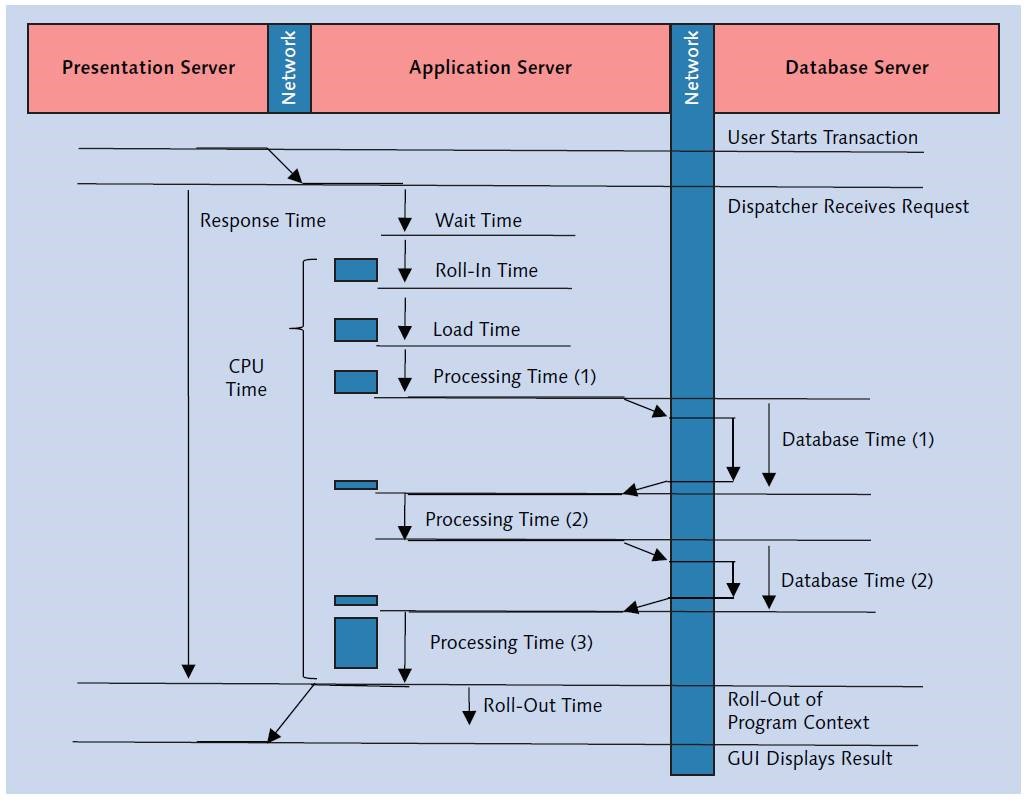
Good response time for a transaction depends upon the response time of the each component involved. Below table shows guideline Values for across components.
| Time | Guided Value | Problem Indicated |
| Dispatcher Wait Time (Avg. Wait Time) | < 10% of response time < 50 ms | General performance problem with many causes |
| Load Time (Avg. Load & Gen. time) | < 50 ms | Program buffer too small or CPU bottleneck |
| Roll-in time, Roll-out time (Avg. roll-in time, Avg. roll-out time) | < 20 ms | SAP roll buffer or Extended memory too small or CPU Bottleneck |
| Roll-wait time (Avg. roll-wait time) | < 200 ms | Problem with front end communication or with external component communication |
| GUI Time (Avg. GUI Time) | < 200 ms | Problem with front end communication |
| Enqueue Time (Avg. Lock time) | < 5 ms | Problem with enqueue, network problem |
| Processing Time, CPU Timeq | Processing Time < 2 x CPU Time | CPU Bottleneck |
| Database Time (Avg. DB Time) | < 40 % Total Response Time minus dispatcher wait time 200-600 ms | Database problem, CPU Bottleneck |
| Direct Read | < 2 ms | Database Problem |
| Sequential Read | < 10 ms | Database Problem |
| Logical Changes | < 25 ms | Database Problem |
For workload monitoring, ST03N transaction to be used which provide multiple options to check the activities happening in system during specific time. We have option to check activities by Day, Week or Month. Also checks can be performed for specific duration via “Last Minute Load” option.
Based on the data available, further checks can be planned as below.

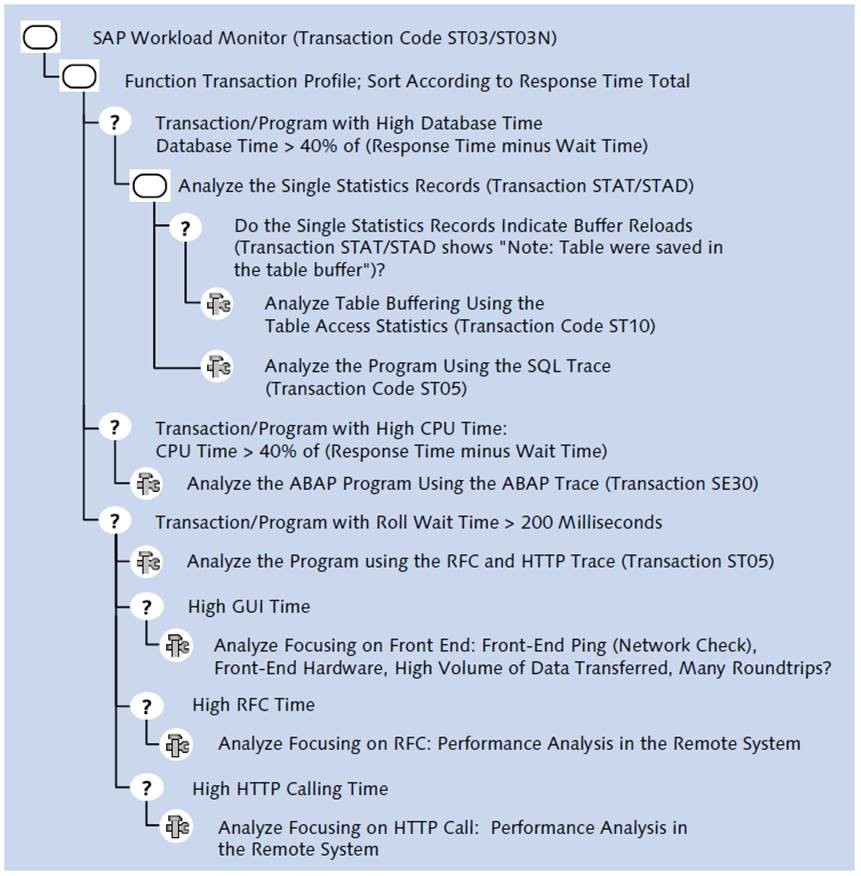
Details about SAP Work Processes can be checked via SM50/SM66.
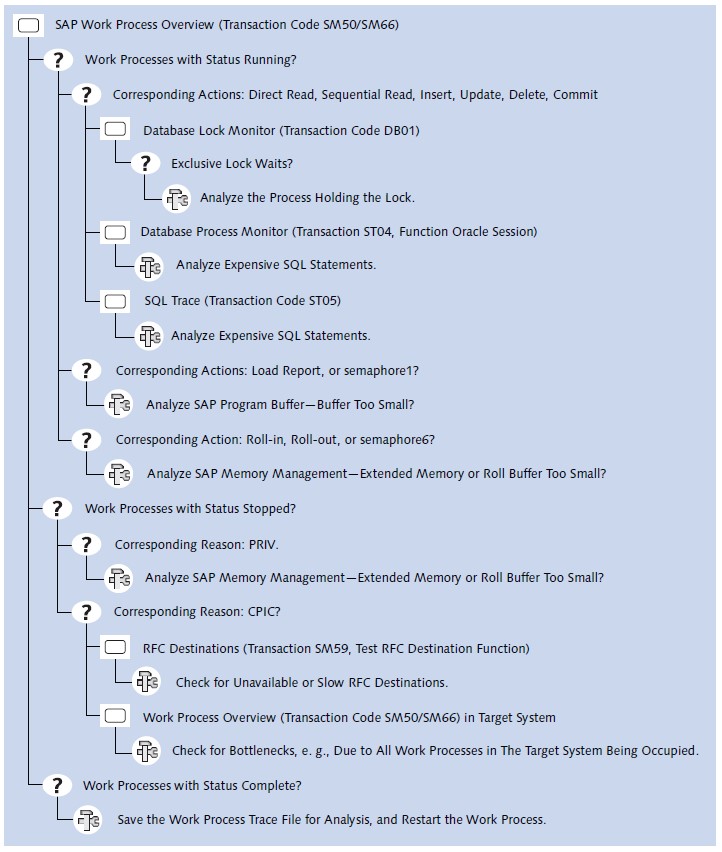
Details about application Server CPU, Memory, Disk, I/O etc. can be checked via ST06.
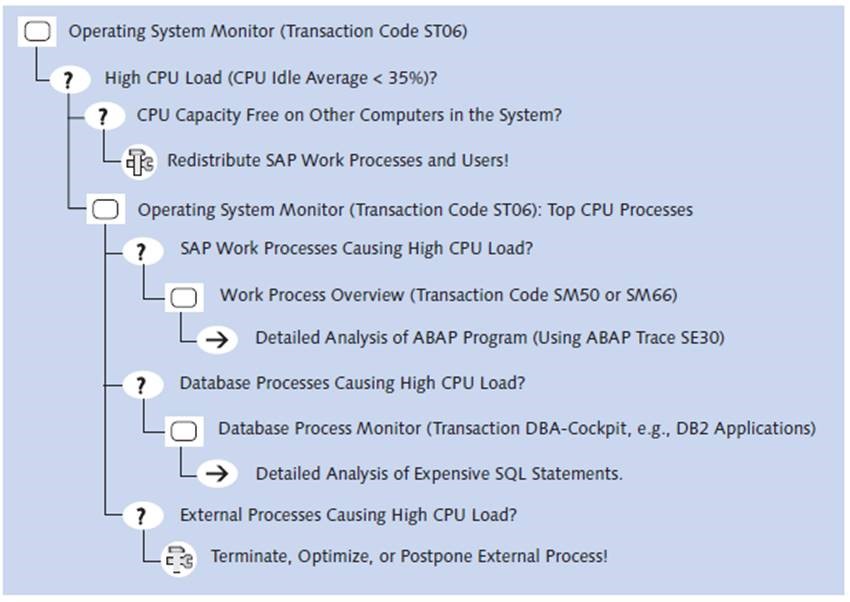
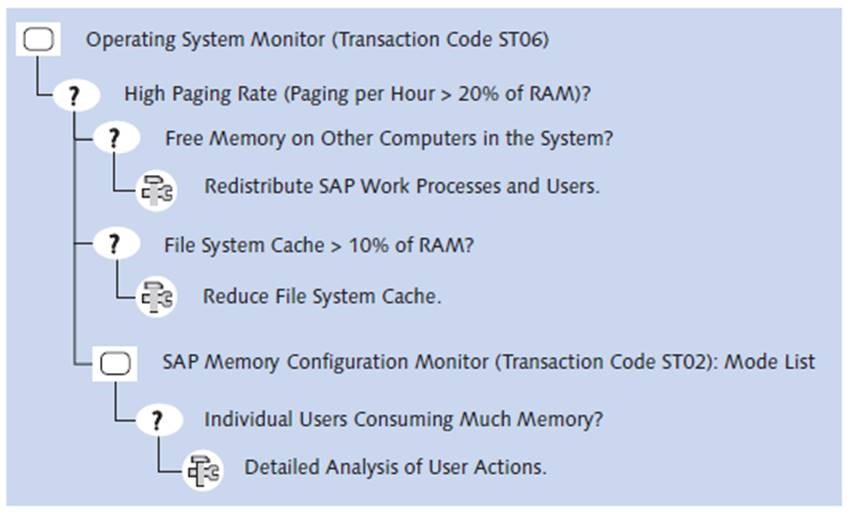
Another major area for performance check is SAP Memory, which can be checked via transaction ST02. SAP Memory consist of three main areas
- Roll Memory
- Extended Memory
- Heap Memory
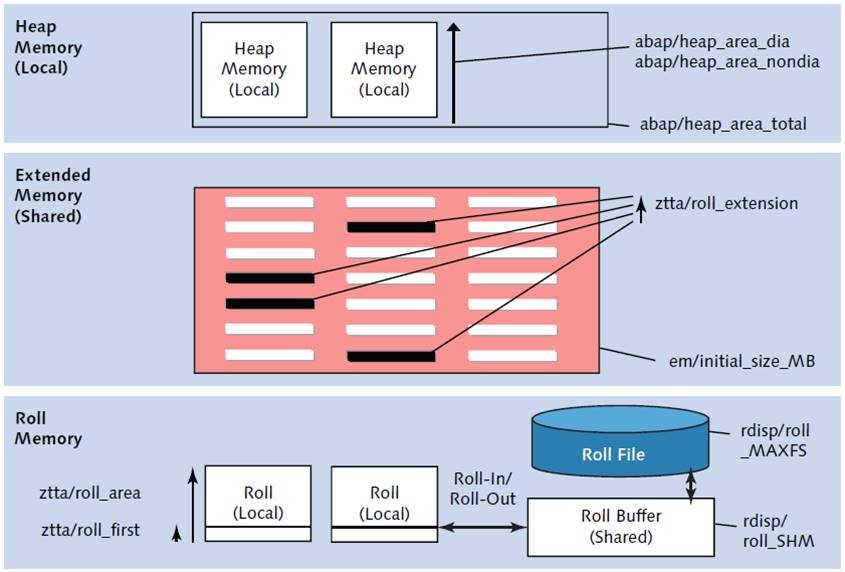
The way memory used by dialog work process and background work process is different in UNIX environment. Flow is as follows.
| Dialog Work Process | Background Work Process |
| Local SAP Roll Memory up-to ztta/roll_first | Local SAP Roll Memory up-to ztta/roll_first |
| SAP Extended Memory, until ztta/roll_extension is reached or extended memory is used up | SAP Heap memory until abap/heap_area_nondia is reached or SAP heap memory is used up |
| Local SAP roll memory up-to ztta/roll_area | – |
| SAP Heap memory until abap/heap_area_dia is reached or SAP heap memory is used up | SAP Extended Memory, until ztta/roll_extension is reached or extended memory is used up |
| Program Termination | Program Termination |
SAP Database related checks can be performed via transaction DBACOCKPIT or ST04 or DB02, each of them provide access to approx. same information via different tabs.


